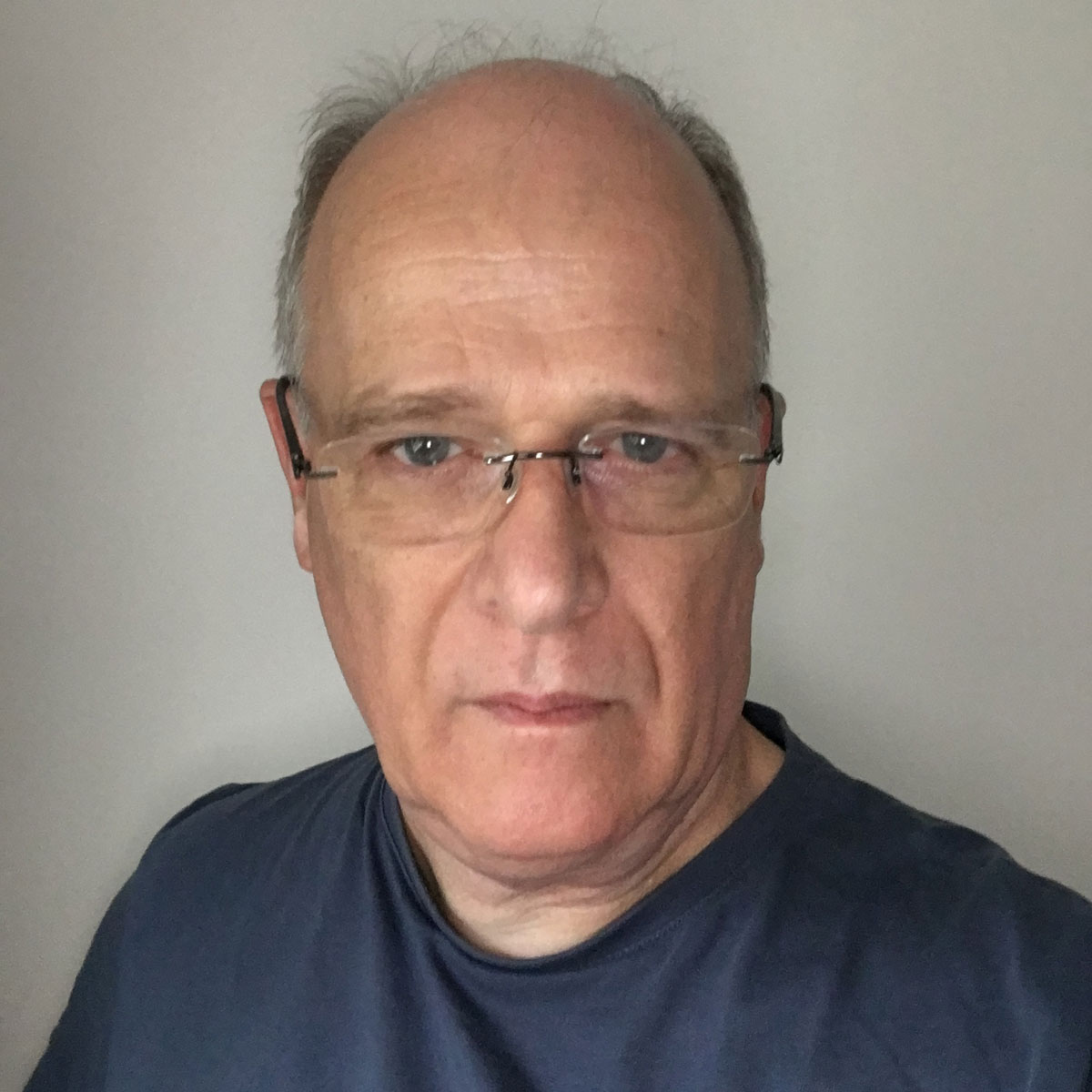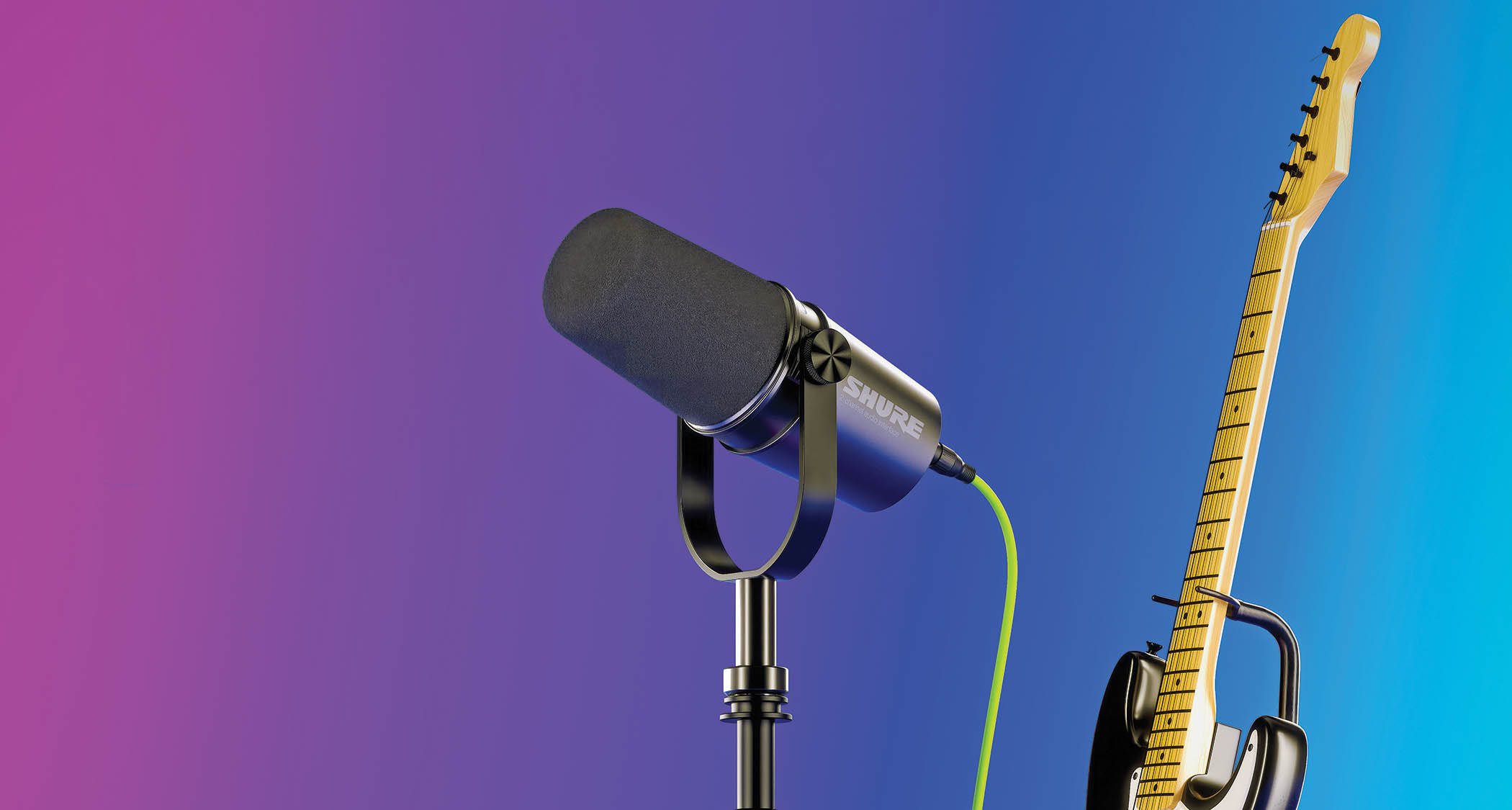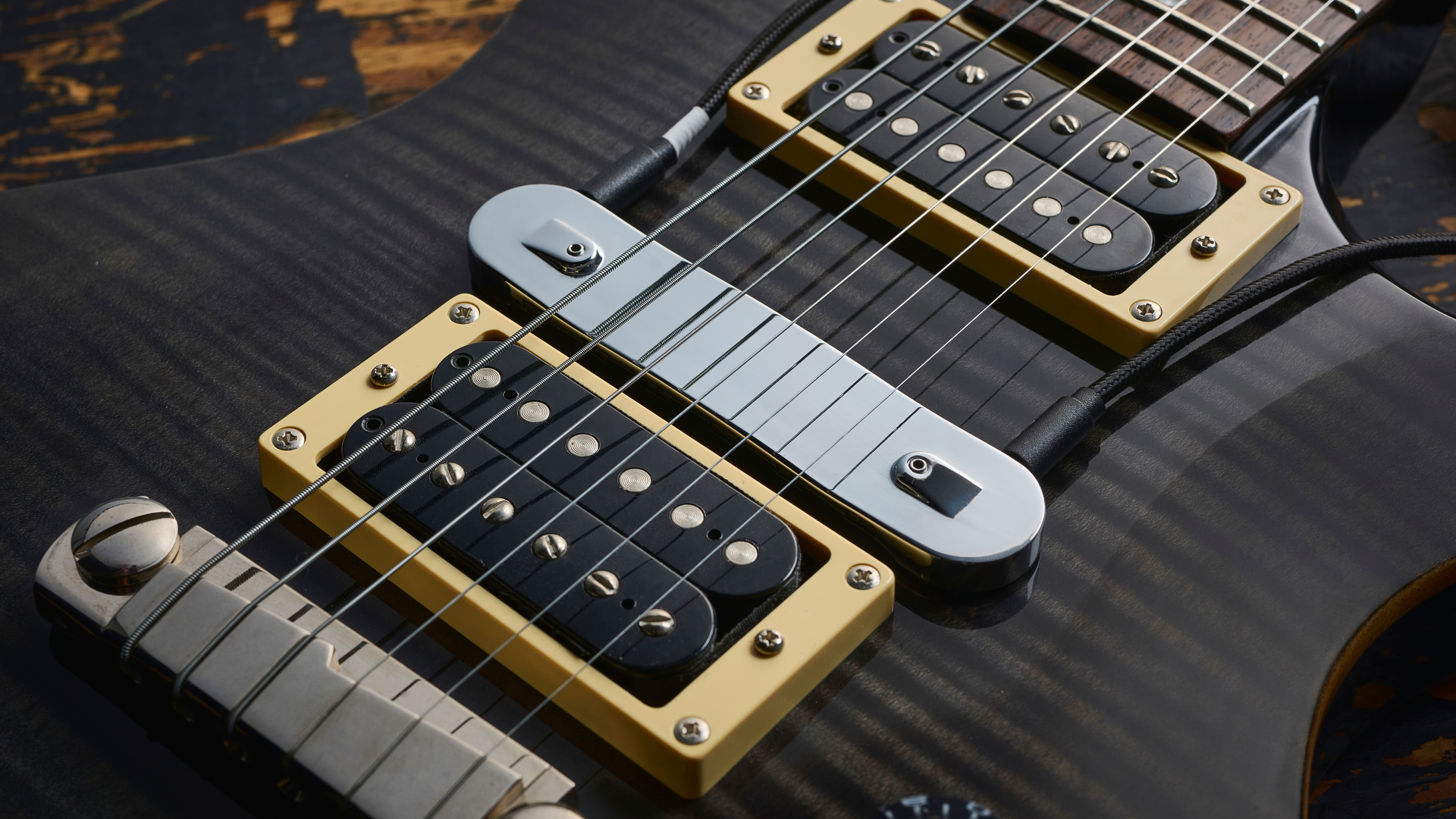Guitar World Verdict
With famous users including Tony Iommi and Lari Basilio, the LA-Studio is aimed primarily at guitarists who want full-on vintage valve sounds for recording or internet broadcast. It’s hardly an impulse purchase, but with everything considered, we reckon it’s great value for money. Definitely one to check out.
Pros
- +
Good-looking, beautifully finished.
- +
Typically high attention to detail.
- +
Accurate vintage valve sound.
- +
Low output and low noise are ideal for recording.
- +
Embedded Two Notes Torpedo DynIR technology and MIDI.
Cons
- -
Low power output means you can’t easily use it for the average unmic’d club gig.
- -
We’d like to see a slightly higher-powered combo version.
You can trust Guitar World
History tends to focus on London and Liverpool as the two main epicentres of British popular music in the late 1960s, but there were others, of course, and one of the most notable was the West Midlands.
From this area came Black Sabbath, The Move (which evolved into Electric Light Orchestra) and glam-rock legends Slade, among others. Back then, Laney founder Lyndon Laney was playing in a group called Band of Joy, a collective of Black Country musicians that included Robert Plant and John Bonham.
Lyndon’s early interest in electronics and amplifiers led to him building his own – at first in his parent’s garden shed and then in a unit in Digbeth as the business took off.
Ever since, Laney Amplification has successfully charted its own course through popular music trends and the ups and downs of British manufacturing. Today, its enviable user list includes Tony Iommi, Vernon Reid and Brazilian virtuoso Lari Basilio, with a resurgence of interest in the guitar amp that drove what would become heavy metal – the Mark 1 Supergroup.
Alongside the current reissued LA100SM and LA30BL heads, Laney recently introduced this specialised low-output recording version we have on review, the LA-Studio, which features built-in Two Notes Torpedo cabinet emulation technology.
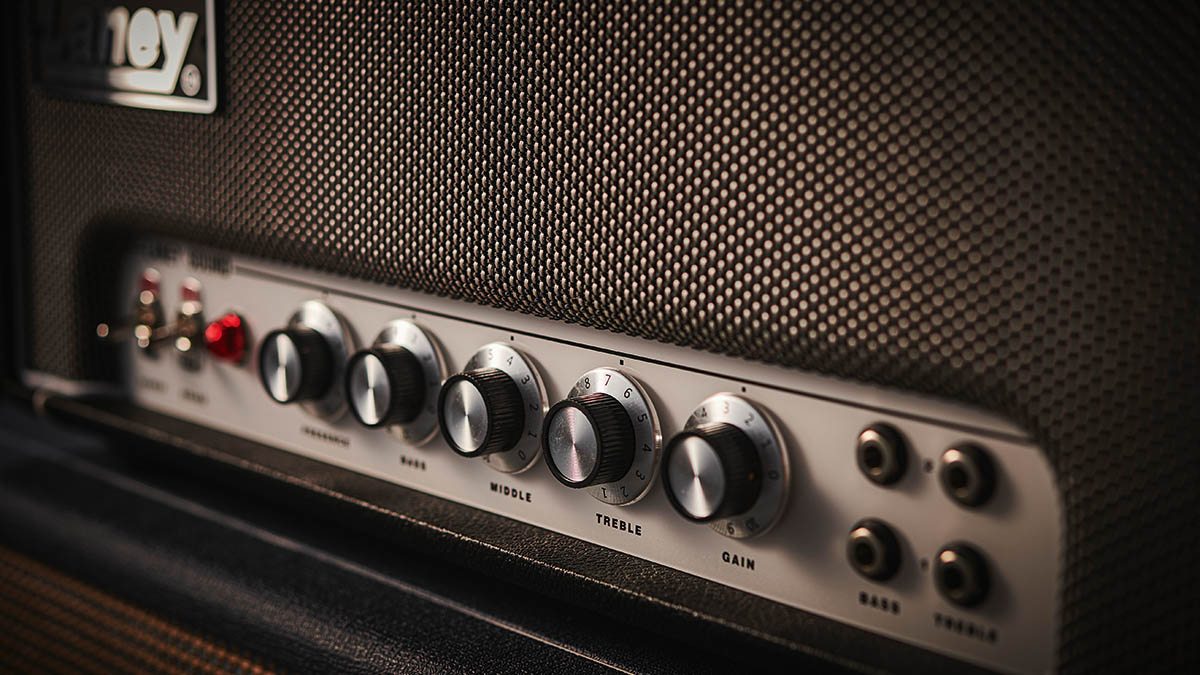
The LA-Studio is a well-presented, good-looking compact head, styled to evoke the look of vintage Laneys from the late ’60s. Attention to detail is everywhere, from the neatly applied white stringing around the plywood sleeve and salt-and-pepper grille, to the recessed serial number plate on the rear panel.
We especially like the large skirted control knobs, which lend authentic vintage mojo to the LA-Studio and look very cool over the white-acrylic control panel.
The electronics are supported on a steel chassis with welded corners. There’s a pair of small mains and output transformers and a choke, while inside the chassis most of the components live on two high-quality printed circuit boards.
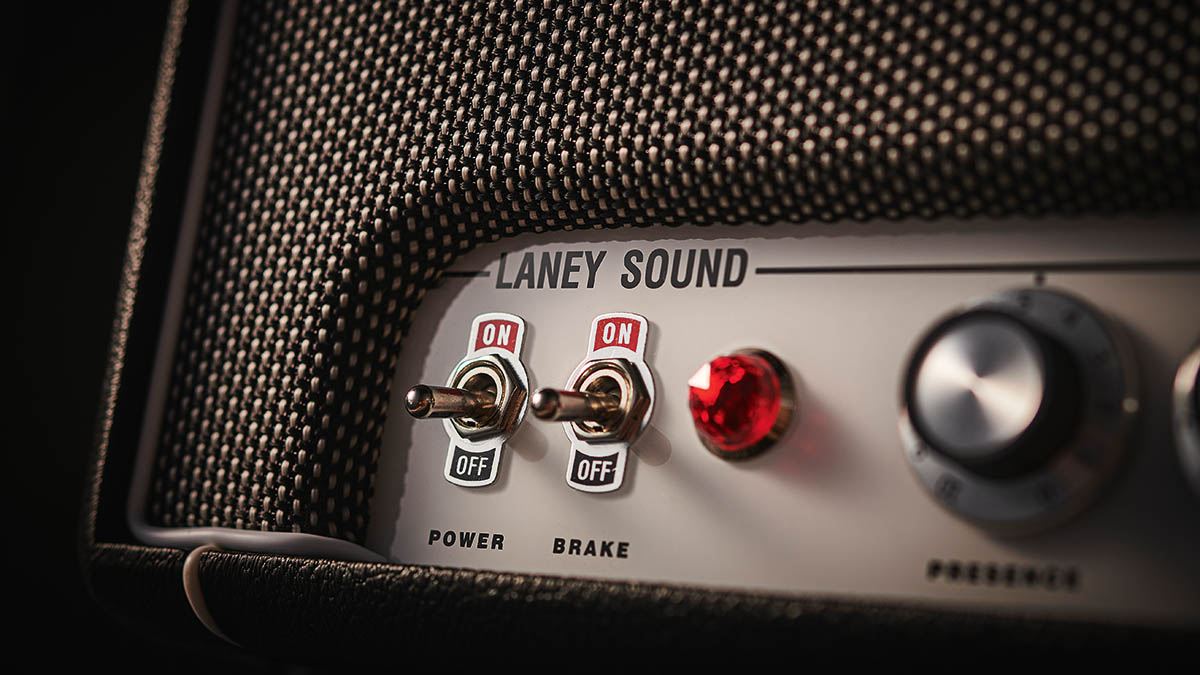
The main board includes sockets for all four of the LA-Studio’s valves: a trio of 12AX7s in the preamp and a single 12BH7 in the output stage.
The 12BH7 is a dual triode commonly used in early valve TVs from the 1950s, which is best thought of as a larger version of the 12AX7 and produces around three watts with both halves running in a Class AB push-pull configuration. The output board holds the Two Notes speaker emulation chip, built-in reactive load and all the associated rear panel connectors. The build and wiring standard is excellent – this amp was made to look good and last.
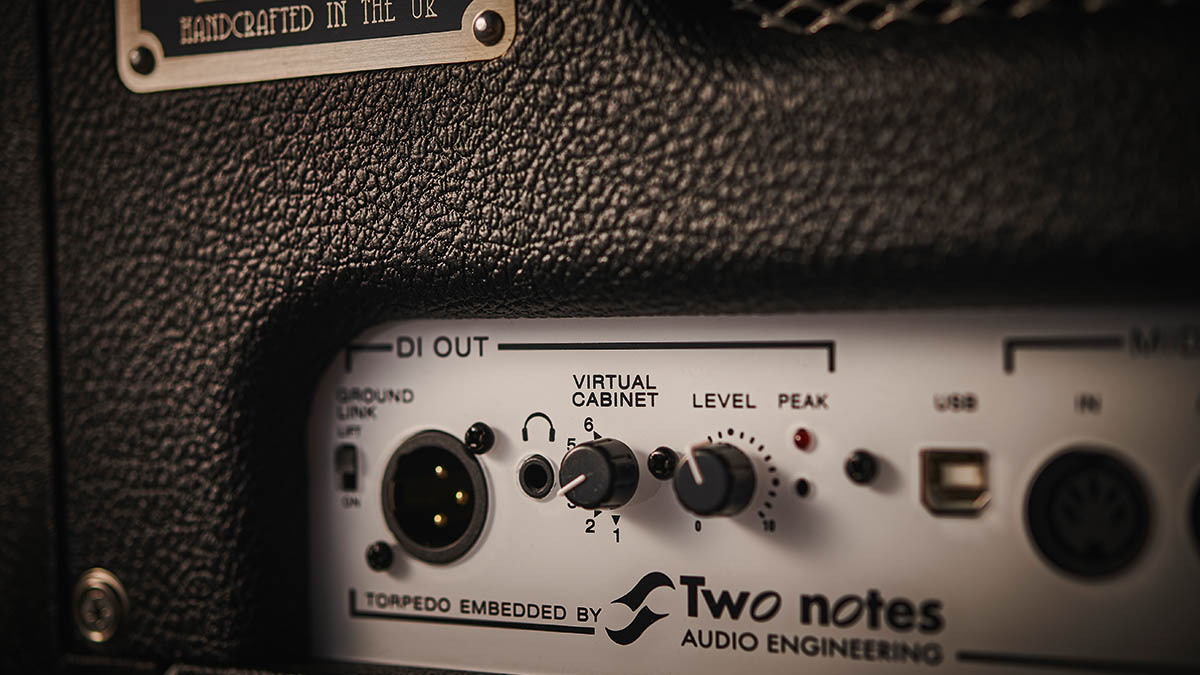
The LA-Studio is a single-channel, non-master volume design with a three-band passive EQ and a traditional presence control operating in the output stage. There are two pairs of input jacks named Bass and Treble. Bass provides a flattish response and works best with pedals, while Treble has extra highs and upper mids.
Both the Treble and Bass inputs have low and high gain options – input 1 is high gain, while input 2 is lower gain, and you can get more tonal variation by jumpering the input jacks with a short patch cable.
Next to the power switch is a second toggle that selects the LA-Studio’s Brake power reduction, dropping output from around three to 0.1 watts, for quiet practice or conventional recording.
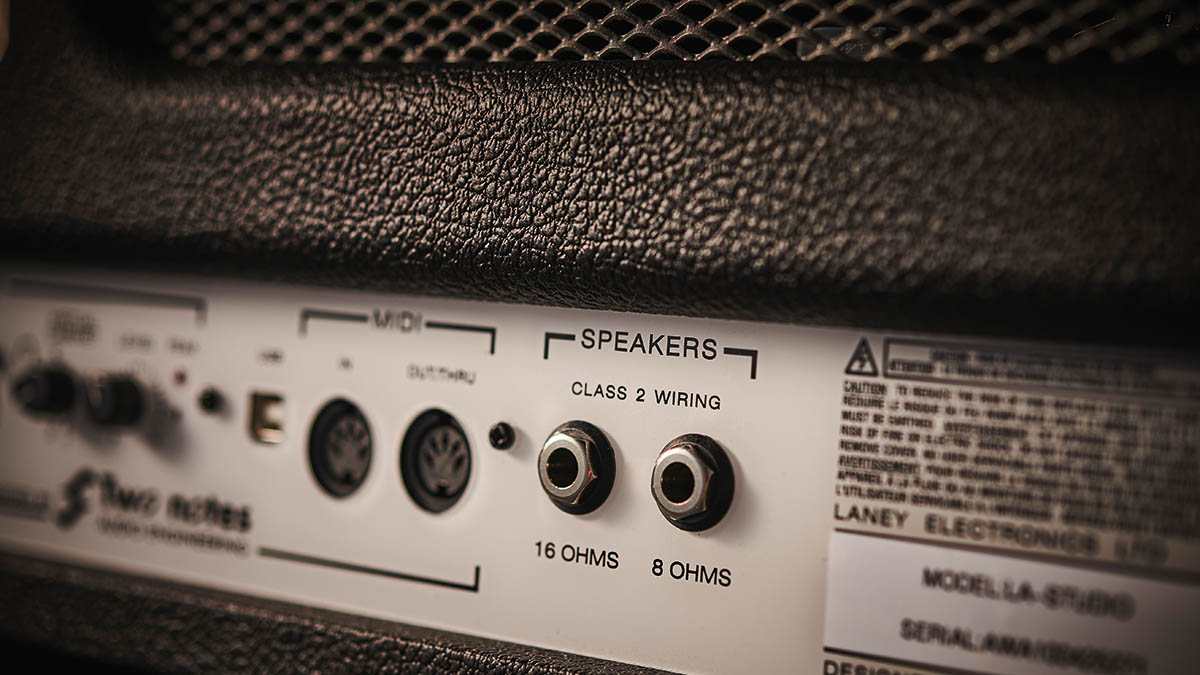
The rear panel is where you’ll find the ins and outs for the LA-Studio’s Two Notes Torpedo cabinet emulation – it’s a full install with a few more features than we’ve seen on other similarly equipped amps. There’s a six-position cabinet selector and a Level control, with a Peak level indicator, MIDI In/Out/Thru sockets and a ground lift switch. Outputs include a 3.5mm headphone jack and a mono balanced XLR for connection to consoles or your favourite audio interface.
A USB ‘B’ socket lets you access the Two Notes tech with the Torpedo Remote desktop app, from where you can edit, save, store and load your favourite settings into the LA-Studio’s six onboard slots.
The built-in high-quality reactive load means the LA-Studio can be used without a speaker cabinet, sending audio to the DI and headphones without any loss of tone or dynamics. There’s a pair of eight- and 16-ohm speaker jacks as well, so you can connect to any cabinet with a matching impedance. Overall, Laney’s LA-Studio is a serious professional tool, with build quality and good looks to match.
Feel & Sounds
We tried out the LA-Studio with a selection of electric guitars, including our Strat and Les Paul, together with a borrowed ’63 reissue Gibson ES-335. Used into a 1x12 Creamback-loaded cabinet, the LA-Studio has a warm and very dynamic tone with a sweet treble, which sounds spot on for late-’60s and early ’70s classic rock. There’s just the right amount of bite from our Strat’s bridge pickup and a satisfying crunch from the Les Paul, with smooth vocal soloing from the 335.
There’s no master volume, but with a maximum output of three watts it can be turned all the way up without being unsociably loud. For occasions when even three watts is too much, engaging the Brake attenuator drops the output down to a miniscule 0.1 watts – quiet enough to talk over, even with the controls on maximum.
The passive EQ is excellent; the Bass, Mid and Treble controls interact smoothly and predictably, with no troublesome peaks or dips. The amp stays more or less clean until around the halfway mark, after which it begins to distort in a very pleasing way with just a hint of fuzzbox at full tilt.
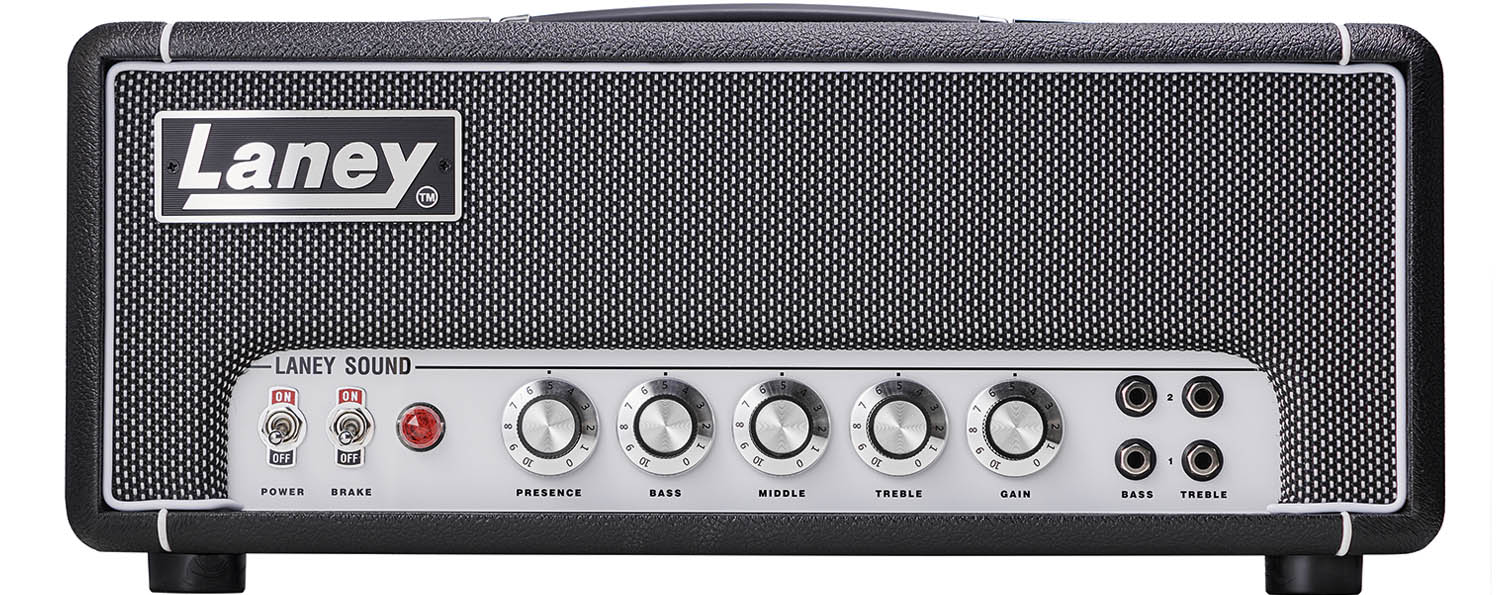
Like most other Two Notes-equipped products, the emulation doesn’t appear on the main speaker, so you need to use the headphones or DI output to hear it. We plugged the LA-Studio into a small PA to check out the six virtual cab presets, all of which were more or less usable straight out of the box.
The Torpedo remote app is a breeze to use and lets you experiment with all kinds of parameters including cabinet type, room size and microphone position to dial in your ideal virtual recording environments.
With just a few minutes of tweaking, it’s possible to create highly realistic virtual cabinets and rooms that sound superb, saving hours of time auditioning hundreds of IRs to find the one you need. If your rig is powered by MIDI, you’ll be pleased to hear the Two Notes module also accepts Program Change and Continuous Controller commands.
Verdict
Laney is on a roll at the moment with a full catalogue of products to suit any musical genre, and the LA-Studio is another desirable addition. The Two Notes cabinet emulation gives the amp practically infinite flexibility, saving your DAW’s processing power for other things in the studio, with the potential for live use when connected to a PA.
In this scenario, it’s ideal for quiet stage applications such as theatres and churches, with the built-in reactive load replacing a conventional loudspeaker, while sending the LA-Studio’s cabinet-emulated output to a console.
Specs
- PRICE: $1,149/£849
- ORIGIN: UK
- TYPE: Tube preamp, tube power amp
- OUTPUT: 3W RMS
- VALVES: 3x 12AX7; 1x 12BH7
- DIMENSIONS: 520 (w) x 220 (d) x 229mm (h)
- WEIGHT (kg/lb): 7.8/17.2
- CABINET: Plywood
- CHANNELS: 1
- CONTROLS: Presence, bass, middle, treble, gain, brake switch. DI cabinet select, volume level, ground lift
- FOOTSWITCH: None
- ADDITIONAL FEATURES: Embedded full Two Notes Torpedo technology with 6-position virtual cab selector, level control, ground lift, balanced XLR out, headphones out, USB, MIDI in, MIDI out/thru, peak indicator LED
- OPTIONS: None
- RANGE OPTIONS: Other amps in Laney’s Supergroup range include the LA30BL head (£919), and the point-to-point hand-wired LA100SM (£2,299)
- CONTACT: Laney
Nick Guppy was Guitarist magazine's amp guru for over 20 years. He built his first valve amplifier at the age of 12 and bought, sold and restored many more, with a particular interest in Vox, Selmer, Orange and tweed-era Fenders, alongside Riveras and Mark Series Boogies. When wielding a guitar instead of soldering iron, he enjoyed a diverse musical career playing all over the UK, including occasional stints with theatre groups, orchestras and big bands as well as power trios and tributes. He passed away suddenly in April 2024, leaving a legacy of amplifier wisdom behind him.
“The world’s most convenient all-tube amp head”: Steve Vai-backed firm Synergy has unveiled a tiny amp head that lets you swap in tones from some of the world’s biggest amp builders
“Modified connects us with a long-standing tradition of modifying Marshall amps that dates back to the 1970s”: Marshall unveils factory modded takes on the 1959 Plexi and JCM800 – tipping its cap to the amp wizards of rock’s golden era

